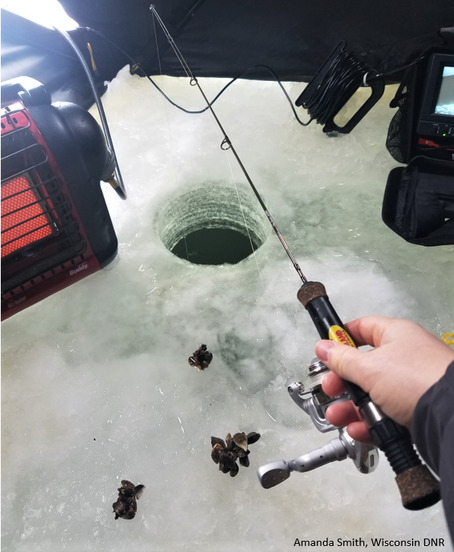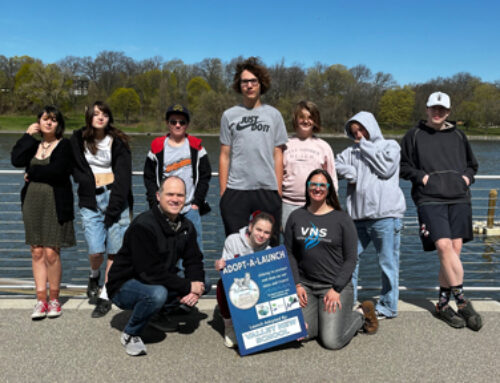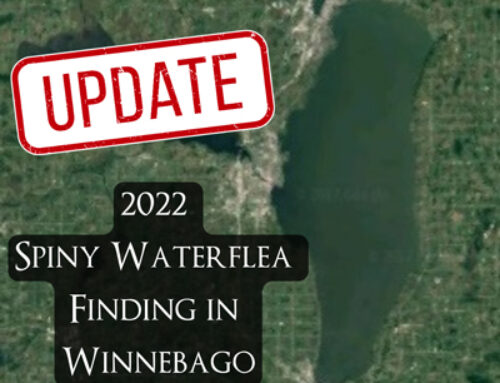Recreation never has an off-season in the Midwest. It’s the dead of winter, and the lakes of Wisconsin have transformed into small villages of ice shanties. The snow globe-like scenes are tranquil. But many of the crystalline sheets of ice that support our ephemeral cities conceal things more sinister than monster pike.

An angler caught quagga mussels from the bottom of a lake.
Although many believe invasive species die off or fall dormant, many aquatic invasive species (AIS) remain viable and continue to threaten our fresh water ecosystems. Eurasian water-milfoil and curly-leaf pondweed are very tolerant to temperature change and continue to grow under the ice, then drastically reproduce when water begins to warm in the spring. This head start over native aquatic species is just one way invasives quickly take over a lake or river system. Just like in the summer, AIS can hitch a ride on fishing equipment during the winter. Because Eurasian water-milfoil and curly-leaf pondweed can re-root from plant fragments, it is important to check for and remove all plant parts from augers, fishing line, hooks, and anything else that comes in contact with lake or river water. Invasive zebra and quagga mussels can also easily get snagged on hooks and reeled in. Be sure to throw any captured invasive plants and animals in the garbage, not back into the water. This ensures aquatic invasive species don’t get the chance to spread.

A fish infected with VHS.
Very serious, contagious fish diseases like viral hemorrhagic septicemia (VHS) and whirling disease can be spread from one body of water to another via water and infected fish. To prevent the spread of diseases, neither live fish nor lake or river water should ever be taken away from a body of water. This includes water added to bait buckets. An exception to the do-not-transport law is for bait minnows bought at a licensed Wisconsin live bait dealer. These minnows may be moved away live and used again in the same body of water, or in other waters only if no lake or river water was added to their container. Unwanted minnows should be disposed of in the garbage, never dumped into a water body. It’s always a good idea to clean ice fishing equipment, especially if you regularly fish in different bodies of water. Cleaning equipment ensures the removal of AIS that are not visible, like the microscopic offspring of spiny water fleas, zebra mussels, and quagga mussels.
To prevent the spread of AIS while ice fishing, anglers should:
- Inspect and clean all fishing equipment like hooks, lines, scoops, nets, and augers after each use.
- Decontaminate all equipment with a disinfection solution or allow to dry for at least 5 days.
- Drain all water from equipment and containers with fish before leaving the ice. Consider transporting harvested fish on ice.
- Only purchase live bait from a licensed Wisconsin bait dealer and properly dispose of unused bait.

Connecting Our Waters attended 4th HOOAH WI’s Operation Tip-Up ice fishing derby on Shawano Lake, January 16th, 2021.
Connecting Our Waters attends ice fishing tournaments to talk to anglers about preventing the spread of aquatic invasive species. We provide education ranging from pamphlets and flyers, to AIS education booths featuring AIS specimens and sampling equipment. If you are organizing an ice fishing tournament and would like to feature AIS education, please contact Anna Bartsch, AIS Coordinator of Shawano and Menominee Counties (anna@fwwa.org).






